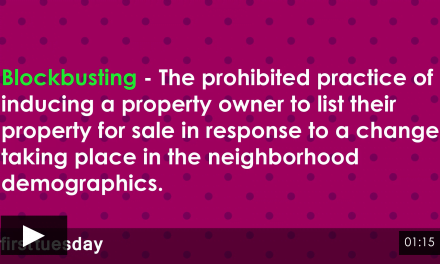As the London Inter-Bank Offered Rate (LIBOR) rapidly approaches its end date, regulators are urging financial institutions to enact their transition plans to other reference rates.
For years, the LIBOR has been the benchmark rate of choice, used by lenders to set rates for various financial products. A common phrase in the financial world is “LIBOR plus x percent.” This includes adjustable rate mortgages (ARMs), which are often tied to the LIBOR.
However, since the LIBOR is not tied to actual transactions, it is left open to manipulation. The LIBOR’s vulnerabilities were first exposed in 2008 when it became known that bankers had been rigging the LIBOR to keep ARM rates artificially low to induce more borrowing — even when it was clear that the market was tanking.
Thus, the financial world is phasing out the LIBOR, starting in just a few weeks (better late than never).
The last one-week and two-month LIBOR settings will be published on December 31, 2021. After that, the Intercontinental Exchange will continue to publish one-month, three-month, six-month and twelve-month LIBOR settings through mid-2023. This extension will give existing contracts a further opportunity to end or be restructured.
In the meantime, institutions will need to name a new benchmark rate.
Several U.S. regulatory authorities, including the Federal Deposit Insurance Corporation (FDIC) and the Federal Reserve (the Fed), have issued statements encouraging institutions to cease issuing contracts which include the LIBOR by the end of 2021. For contracts that include the LIBOR rate, institutions need to identify and update language to include a backup rate to be used in lieu of the LIBOR.
Related article:
Have you met SOFR yet?
Here in the U.S., the backup rate of choice is the Secured Overnight Financing Rate (SOFR), administered by the New York Fed.
Unlike the LIBOR, the SOFR is less susceptible to manipulation or fraud. This rate is based on completed transactions, specifically on overnight funds collateralized by Treasury Securities.
For housing, homebuyers choosing ARMs in 2020-2021 have already started seeing the SOFR in their notes. Beginning in 2020, Fannie Mae and Freddie Mac’s regulatory agency, the Federal Housing Finance Agency (FHFA), has prohibited the purchase of any ARMs benchmarked to the LIBOR with maturity dates beyond the December 31, 2021 deadline. The FHFA has also worked to help Fannie Mae and Freddie Mac transition to the SOFR.
With more reliability in the reported rates will come greater protection for homeowners with ARMs and consumers with other types of credit.
This transition continues the long road to recovery from the missteps of the Millennium Boom, when credit flowed like wine and banks were the sommeliers. The LIBOR scandal exposed the inability for lenders to regulate themselves.
While the LIBOR-to-SOFR transition is a step in the right direction for homeowners with ARMs, it’s ultimately up to homebuyers and their agents to protect themselves from risky financial products. firsttuesday has long advocated that ARM use be reserved for the most savvy investors and real estate buyers. But when an ARM is chosen going forward, at least homeowners will know the benchmark rate will be free from manipulation.














